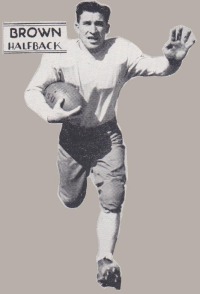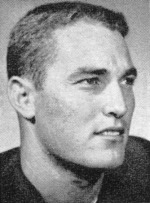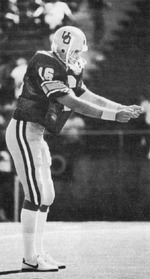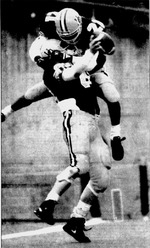Wisconsin and Oregon. Separated at birth?
Unlike Oregon’s other recent Big Game opponents, teams with significant winning traditions and great pedigrees, the 2012 Rose Bowl saw the Ducks playing a team that was in many respects a mirror image of itself.
Not in the style of play or physical attributes – the differences between Oregon and Wisconsin on the field are well documented, and a subject of great debate on other sites – but in their histories, and what they’ve put their fans through over the years.
If Oregon’s dividing line between The Suffering and success is 1994, Wisconsin’s equivalent Year of Demarcation is 1993, when the Badgers, in Barry Alvarez’s third season, broke a 30 year Rose Bowl drought and a string of eight straight losing seasons.
As close chronologically as the teams respective Years of Demarcation are, their respective records during the preceding Decades of Suckitude, and subsequent Ages of Enlightenment, are also eerily similar:
|
Period |
Wins |
Losses |
Ties |
Pct |
|
|
Oregon |
1965 – 1993 |
126 |
186 |
7 |
.406 |
|
Wisconsin |
1964 – 1992 |
114 |
192 |
9 |
.376 |
|
Oregon |
1994 – 2011 |
158 |
68 |
0 |
.699 |
|
Wisconsin |
1993 – 2011 |
166 |
69 |
4 |
.703 |
It would be difficult to intentionally manipulate the performance of two teams to generate records this similar over almost identical periods.
There are so many similarities in Oregon and Wisconsin’s histories that it’s almost easier to find the differences. (There, one can start with Camp Randall Stadium, with almost twice the capacity of Autzen, and the legendary fanaticism of football fans in Wisconsin. Fan support for the Badgers is so solid that in 1968, when the team was suffering its second consecutive winless season, the stadium was still filled to 54% of capacity. Only during the Don Morton era did attendance regularly dip below 40,000 – a major factor in his termination; he was replaced by Barry Alvarez in 1990. By contrast, during the years of abject apathy for the Ducks, in the mid-70s, the stadium was regularly half-empty, or worse… and Oregon has never gone winless once, never mind twice.)
Now, those similarities…
Separated at birth? |
Oregon |
Wisconsin |
|
Modern Rose Bowl drought |
37 years (1958 – 1995) |
31 years (1963 – 1994) |
|
9+ win seasons, 1945 - 1993 |
1 (1948) |
None |
|
9+ win seasons since 1993 |
11 |
10 |
|
Bowl appearances, |
6 |
3 |
|
Bowl appearances, 1964– 2012 |
19 |
20 |
|
Losing seasons, 1964 – 1993 |
20 |
24 |
|
Losing seasons since 1994 |
1 |
2 |
|
Longest losing streak |
15 games |
24 games |
|
Ten horrible but representative pre-1994 losses (* = home) |
1972: 68-3, Oklahoma 1974: 61-7, Nebraska 1974: 66-0, Washington 1975: 5-0, San Jose St * 1976: 53-0, USC * 1976: 46-0, UCLA 1977: 54-0, Washington * 1982: 10-4, Fresno St * 1983: 21-15, Pacific * 1985: 63-0, Nebraska |
1968: 20-0, Utah St * 1974: 52-7, Ohio St 1975: 41-7, Kansas * 1977: 56-0, Michigan 1978: 55-2, Michigan St 1978: 42-0, Michigan * 1988: 24-14, Western Michigan * 1988: 62-14, Michigan * 1989: 51-3, Miami FL * 1990: 24-18, Temple * |
|
Swan Dive Season |
1988 (6-1 start; 0-5 finish) |
1977 (5-0 start; 0-6 finish) |
|
Immovable Force Offense |
1982 (103 points in 11 games) |
1968 (86 points in 10 games) |
|
Irresistible Object Defense |
1977 (allowed 377 in 11 games) |
1969 (allowed 349 in 10 games) |
|
Minor bowl appearances that felt major to the teams at the time, considering |
1989 Independence (W) 1990 Freedom (L) 1992 Independence (L) |
1981 Garden State (L) 1982 Independence (W) 1984 Hall of Fame Classic (L) |
|
Brief period of optimism |
1979-1980 (winning seasons with John Becker as offensive coordinator) |
1981-1984 (three bowls in four years under head coach Dave McClain) |
|
Setback after brief period of optimism |
Probation, 1980-1982 |
Sudden death of head coach (Dave McClain died of heart attack during offseason, 1985) |
|
Coach named Don who was fired after 3 years of blowout losses and declining attendance, who won a national championship in a lower division |
Don Read (fired 1977; won D 1-AA title at Montana in 1995 ) |
Don Morton (fired 1989; won D-II title at North Dakota State in 1983) |
|
Athletic Director who replaced a Hall of Fame legend (and damn near ruined everything) |
Norv Ritchey |
Ade Sponberg |
|
Athletic Director who saved the program |
Bill Byrne (1982-1992) |
Pat Richter (1990-2006) |
|
AP poll appearances, 1964 - 1992 |
13 of 361 polls (.036) |
9 of 361 polls (.025) |
|
Anomaly |
Celebrated 1993 win over Michigan by hospitalizing 73 fans after stampede to field |
|
|
Signature win that finally ended The Suffering (or whatever Wiscy calls it) |
||
|
Established team as national power in his only Division 1 head coaching job, then became Athletic Director |
Mike Bellotti |
Barry Alvarez |
|
Quarterback who threw for a zillion yards and set multiple Rose Bowl offensive records, despite losing |
Danny O’Neil (1995) |
Ron Vander Kelen (1963) |
|
Longtime, bitter rival that has been utterly dominated for years |
Washington |
Minnesota |
1 Oregon was ineligible for bowl games other than the Rose Bowl from 1916-1958 and 1963-1974, but was granted an exception in 1948 season to play in the Cotton Bowl. From 1959-1963 Oregon played as a “Western Independent” and was eligible for other bowl appearances. As a member of the Big Ten, Wisconsin was ineligible to appear in any bowl game other than the Rose Bowl until 1977, when the conference relaxed its postseason rules.
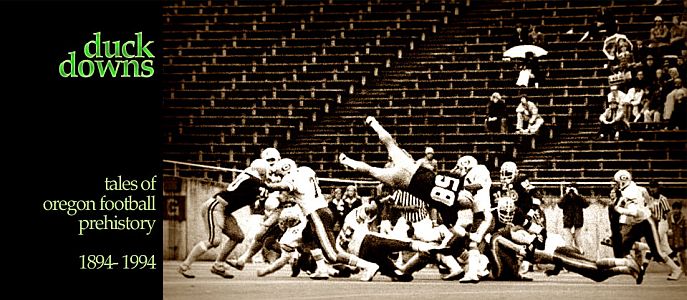
 benzduck
benzduck